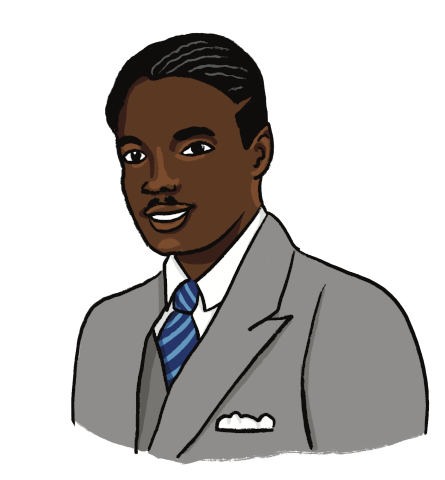
(August 24, 1904 – August 10, 1991)
AKA
"Professor"
Henry Franklin Smith was born in Alsdorf, Texas and raised in a musical family. He was an alto saxophonist and innovator who made often-overlooked and vital contributions to the history and development of jazz saxophone.
Smith played saxophone for a number of prominent band leaders including Duke Ellington and Earl Hines as well as vocalist Ella Fitzgerald. Beyond his own innovations as a player, Buster Smith's greatest legacy was a mentor to 'Bird' - Charlie Parker. Parker would go on to become the most important figure in the history of the saxophone.
Buster Smith invited Parker to join his band in 1937. He became a father figure to the younger saxophonist. He helped Parker with his technique, which would eventually be one of the key elements in how Parker re-defined the playing of saxophone. Buster Smith was also an early influence in helping Parker to develop the ability to effortlessly between double and triple time at various tempos. This influence would later help Parker to re-define the concept of rhythmic expression in improvisation.
‘He did play like me quite a bit I guess. But, after a while, anything I could make on my horn, he could make too, and make something better of it... He’d listen to you.
He used to call me his dad. I called him my boy’.
As a player, Buster was known for having a huge sound, an attribute which he also bequeathed to the young Parker. With tenor giant Lester Young he co-developed the Texas Sax Sound by using a tenor saxophone reed in his alto saxophone to achieve a "fatter" sound. Lester also opted for a harder reed, using a baritone saxophone reed on his tenor saxophone. This sound was later labelled the Texas Sax Sound.
Despite his early innovations and influence in the 1930s, Buster did not lead his own recording session until 1959. He led this first solo recording session in Texas. The album is called The Legendary Buster Smith. Further albums were planned, but were never realised when Buster was injured in a car accident and was no longer able to play the saxophone. This tragedy did not quench his resolve and desire to play music. He responded by learning the play the electric bass and finding a new way to express himself.